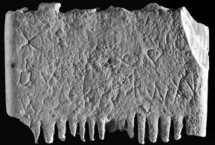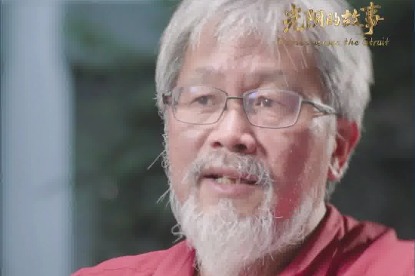Digging deep for meaning on ancient comb script

Archaeologists in Israel have discovered what is thought to be the oldest known sentence written in the earliest alphabet — and the translation is a real chin-scratcher.
"May this tusk root out the lice of the hair and the beard," read the inscription on a 3,700-year-old comb carved from elephant ivory.
The words are written in Canaanite, which is the earliest known alphabetic system invented by Semitic-speaking people around 1800 BC in the Eastern Mediterranean region.
The comb was unearthed in 2017 in the ruins of an ancient Canaanite city-state called Lachish, but the 17-letter inscription was only discovered this year after the comb was cleaned for preservation.
At its height, Lachish was the second-most important city in the Judean kingdom after Jerusalem in the Iron Age, and a major city in the Persian and Early Hellenistic eras.
Archaeologists had found fragmented evidence of the ancient alphabet in Lachish before, but no more than two or three words engraved or written in ink on walls and objects.
"This is the first sentence ever found in the Canaanite language in Israel," said Yosef Garfinkel, an archaeologist at the Hebrew University of Jerusalem, who led the research. "There are Canaanites in Ugarit in Syria, but they write in a different script, not the alphabet that is used until today."
The Canaanite alphabet was standardized by the Phoenicians and went on to form the basis of the ancient Greek and Latin alphabets, which in turn informed many of the languages spoken in Europe today.
"The comb inscription is direct evidence for the use of the alphabet in daily activities some 3,700 years ago," Garfinkel said. "This is a landmark in the history of the human ability to write."
Several examples of ancient inscriptions in nonalphabetic languages, including Chinese characters and Egyptian hieroglyphs, predate Canaanite. The earliest form of writing ever found dates from almost 5,500 years ago in Mesopotamia, an ancient region that includes present-day Iraq.
Measuring 3.5 by 2.5 centimeters, the small comb includes more than a dozen fine teeth on one side, which were used to extract lice from the hair, and evidence of six larger teeth on the other side, which would have been used to tackle knots.

Today's Top News
- China files fresh protest with Japan over PM's remarks
- Scholar clears misconception of Taiwan under Japanese rule
- Xi urges breaking new ground in advancing rule of law in China
- Dutch govt urged to mend chip dispute
- Macao's heritage sites hold special appeal for games
- China tackles N2O emissions, leading change






























